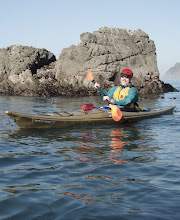The strips are flexible, but only to a point. It can be challenging to get them to conform to the forms. When you force them into place, they like to spring back and are often under enough tension to pull a staple out. In addition they often need to be twisted into the proper shape. And if you bend one too far...SNAP!
Ultimately one has to use a combination of reshaping the strip using heat and/or steam as well as holding it in place under tension until it is glued into place.
A lot of builders swear by using a heat gun in order to soften a strip so it can be bent into shape. Once it cools down, it holds the shape. I'm not sure if it is a lack of patience, a lack of skill, or a property of the particular wood I am using, but I didn't have much luck with the heat gun. I found I couldn't get the wood to bend much and that I would get the wood so hot that it would start to burn a little. So I decided to try steam.
I'm lucky enough to have a steam cleaner. This is an appliance that heats water to boiling and keeps it there. When filled it will hold enough water to provide about 15 minutes or so of a constant jet of high pressure steam:

My first step is to clamp the strip flat against a work surface. I cover the end of the work surface with foil to prevent damage from the steam:

Next, I slip a length of PVC with a hole in the middle of it over the portion of the strip that I want to bend. (I found most of the time I wanted to get a twist in the strip to get it to follow the line of the forms.) I put a clamp on the strip outside of the PVC so that I can handle the strip without scalding my hand. I then put the nozzle of the steamer up to the hole and spray the steam in:

It only takes about 20 seconds for the wood to soften to the point where it can be easily twisted and bent. I do this using the clamp and hold it in place until the wood cools back down. Usually a little less than a minute. I have found that there is a little rebound from where I hold it. In other words, I have to bend it a little farther than I want it to end up:

Often, I found that I had over-bent or under bent the strip. This really isn't a problem, since it's easy to resteam and rebend. After a while, I got fairly accurate with it. A couple of times, I ended up having a strip in place but needing to reshape it at the end. In these cases, I used foil to protect the strips already in place and steamed the strip while it was partially on the forms.
Steaming doesn't remove all the challenges. I still found that the twists and bends near the bow and stern were severe and that things needed to be held tightly in place.
In one instance, I bent a strip too much and heard that dreaded snapping sound. It's the only time I have cussed during this entire process. But as I have learned, there are few, if any, mistakes that cannot be fixed. I steamed the strip to get it closer to the desired shape and then glued the pieces back together. If I look hard enough, I can find the break, but I'm probably the only one who can.
Next time, the biggest mistake so far, I promise.





